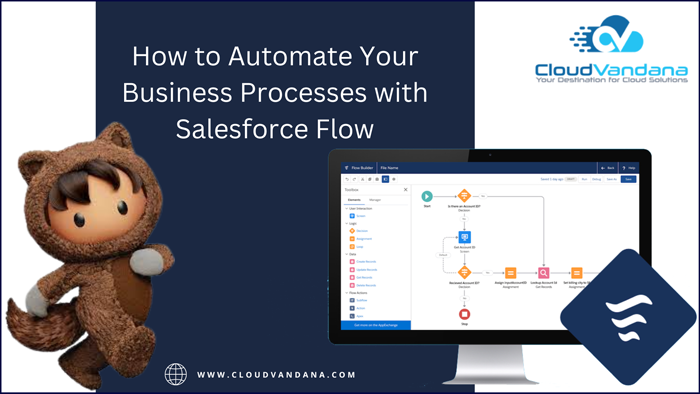Automate your business processes with Salesforce Flow, a powerful cloud-based automation platform. Get started with a comprehensive guide by CloudVandana.
Salesforce Flow is a powerful automation platform that can help you streamline your business processes and save time by automating repetitive tasks. Whether you’re just getting started or already have experience with Salesforce Flow, our comprehensive guide will help you get up and running quickly.
Learn the Basics of Salesforce Flow
Before you can start automating your business processes with Salesforce Flow, it’s important to understand the basics of how the platform works. The platform consists of building blocks called Flows and Triggers, which control how data moves between systems and applications. These building blocks are then connected together in a logical series, allowing you to create automated processes that save time and effort.
Create Flows to Automate Business Processes
Once you understand the basics of Flow, you can begin using it to automate your business processes. You can create Flows from scratch or from pre-built templates that make it easy to get up and run quickly. You’ll then be able to configure the Flows, setting triggers and preferences such as the number of users and timeframes, so they run automatically according to your specific needs.
Utilize Conditions and Loops in Your Flows
To get the most out of Salesforce Flow, make use of conditions and loops. With conditions, you can determine whether or not a certain step or action should be taken depending on certain criteria. For example, if you want to update records based on their status, you can use a “condition” step in your Flow to ensure that the updates only occur for certain statuses. Meanwhile, with loops, you can repeat certain processes until specified criteria are met. For instance, if you need to send out an email notification every day until a task is completed, a loop would enable you to do this automatically. Utilizing these features can help make your Flows more robust and efficient.
Use Visual Workflows for a More Intuitive User Experience
Using Salesforce Flow’s Visual Workflows feature, you can quickly create and edit business processes via an intuitive drag-and-drop interface. It’s a great way to break down complex processes into visual segments, making it easier for users to follow along with the process as it runs. With Visual Workflows, you can customize the look and feel of each step in the flow. You can also drill down into details such as component configuration, step actions, and more. Creating visually engaging experiences with Salesforce Flow will make your automation process both efficient and easy to use by anyone in your organization.
Integrate with Other Salesforce Products for Greater Efficiency
If you want to maximize the power of Salesforce Flow truly, consider integrating it with other Salesforce products. Integrations allow you to leverage features like Salesforce Einstein AI and Analytics Cloud, giving your organization the ability to automatically surface relevant customer insights or create more intelligent business processes. With Salesforce integrations, the amount of data being worked with is usually much larger than when dealing with standalone products, so it’s important to have an understanding of how these different platforms can work together. With deep integration capability, Salesforce Flow can be empowered by adding key components for your organization.
Are you looking for a reputed Salesforce partner? Please feel free to schedule a call with the reputed Salesforce partner CloudVandana and experience the highest benefits of this customer relationship management platform. Call us now.










